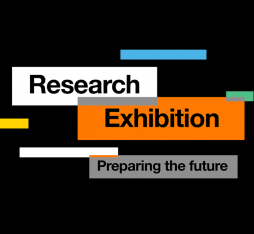“Cars no longer rely solely on their own sensors but extend their awareness to all sources of communication around them.”
On October 21, 2021, the 5GCroCo project teams—who come from carriers in multiple countries and from car manufacturers for different brands—showcased their work. “This is an important step after 12 years of research on connected mobility,” says Cédric Seureau, Program Manager at Orange Innovation. “5GCAR, a previous project, aimed to design the global architecture, taking into account data security and privacy, quality of service (QoS) management, and traffic flows in the context of multiple access networks and multiple car manufacturers, and with different V2X (vehicle-to-everything) links. With 5GCroCo, we can demonstrate and validate these concepts in real-world conditions — on highways and regional roads.” The aim of the project is to test three use cases related to CCAM (cooperative, connected and automated mobility) services in a cross-border environment. Experiments are taking place in the 5G corridor in Schengen (Luxembourg) and another 5G corridor linking the town of Forbach (France) with the city of Saarbrücken (Germany).
Lessons from 5GCroCo
Transmission of HD 3D maps to vehicles with real-time updates, remote vehicle control and cooperative collision avoidance: Orange was most involved in this third technology. The approach focuses on the vehicle communicating with its surrounding environment, which is called V2X (vehicle-to-everything). “Cars that no longer rely solely on their own sensors but can extend their awareness to all sources of communication around them—including other vehicles, the road and urban infrastructure, and pedestrians—will be a reality in the not-too-distant future. We are building an ecosystem that grows around 5G connectivity for vehicles. The 5GCAR research project set up all the architecture needed for cooperative, connected and autonomous vehicles. Today, with 5GCroCo, we’re finally setting ourselves the goals that we had dreamed about over the last ten years of research.”
5G and Smart Mobility Go Hand in Hand
In addition to the volume of data to transmit, these critical cases require very low latency: On the road, reaction times must not exceed mere tens of milliseconds. As vehicles travel quickly from one antenna to another, this low latency must be guaranteed in relation to both time and location. Since 5G is the driving force of connected mobility, Orange provided connectivity and low-latency network slices to the 5GCroCo project. But the carrier didn’t just stick to its core business. Florence Gagnepain, Head of Industry and Connected Transports at Orange Innovation, explains: “We have been investing in research on end-to-end network and software architecture and AI for more than a decade, in the areas of connected transport and network optimization. Within our group, our projects are all enhanced with 5G connectivity and software development, teams work on topics as diverse as they are exciting in private areas or on open roads, and calls for projects are constantly identifying new challenges with a growing number of partners.”
A Unifying Project beyond Mobility and Connected Cars
5GCroCo marks a turning point for Orange, both on the research side and on the business side. In the coming years, research will focus on securing critical services, on cybersecurity and on quality of network services. Another area of significant focus will be the environmental side of things, through optimizing edge computing or using AI — a promising but potentially data-intensive technology. “New projects are emerging off the back of the 5GCroCo project, for example regarding developing rural transport. And, although this is a collaboration between network carriers, public transport companies and local authorities, we are already witnessing how the V2X ecosystem will benefit smart cities. In a field where the economic model is still to be determined, industry stakeholders and local authorities have a strong interest in working together in the spirit of co-innovation. Support from the European Union is also vital for stepping up research efforts in this region in response to China and the United States, and gradually refining cooperative connected vehicles — until autonomy is achieved!”











